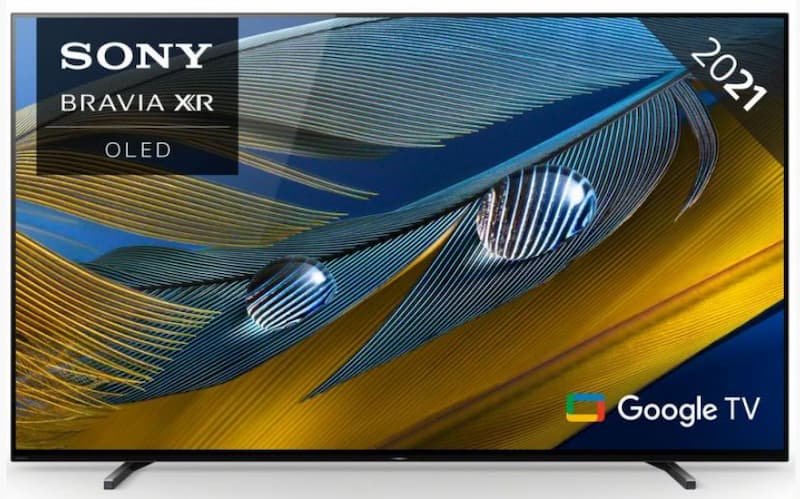Over the past decade, we have seen a significant improvement in the TVs we watch at home. From their interactive features to the definition of the picture on the screen, there is much to be admired about the golden age of TV we find ourselves in.
Whilst the smart TV has technically been produced since 1994, it wasn’t until around 2017 did the smart TV began taking over UK Households. As technology continuously improves, we explore how AI impacts the TV industry.
What Is AI?
AI stands for artificial intelligence and applies to the technology introduced into digital devices and mimics the problem-solving capabilities of the human mind. This technology can be used for visual perception, speech recognition, decision making and word translation and applies to TVs to improve the device’s visuals, audio and functionality.
This introduction of progressive technology has allowed smart TVs to provide us with the best experience possible without leaving the comfort of our homes.
Voice Control
One of the most apparent developments of AI within TVs is the ability to instruct a smart TV by using dialogue. Each brand has integrated its voice assistants, but the two most common among many big manufacturers are Google Home and Amazon Alexa.
Manufacturing TVs compatible with these already developed voice assistants allows consumers to connect their smart TV to other smart devices. Through AI technology, they can command and instruct one another to function almost human-like.

Many manufacturers opt for just one voice assistant, such as Sony, which uses the Google home assistant. Integrating with other home appliances encourages consumers to keep within the “Smart family”. It offers them a significant advantage over other brands that may have chosen to develop their smart TVs with an alternative AI voice assistant. However, the likes of Samsung have combatted this issue by introducing not just one home assistant but can provide provisions for Google Home, Amazon Alexa and their own in-house assistant Bixby.
These home assistants are on constant alert for their wake word, or you can activate them with a button and follow up with directions for the device to follow. This function makes finding your favourite shows easy, instructing other devices to activate, communicating with other interface users, and much more.
Upscaling Visual Aspects
Another major use of AI within TVs is improving the detail and visual aspects of older programs, films and shows produced before the advanced technologies used to broadcast in the current sector.
Every TV, smart or not, built in the past few years, will be able to upscale scenes to a higher quality more recognised from modern-day shows. This allows retrospective viewing of favourite TV shows, with even better detail. For example, as the modern TV became widescreen, they still needed to be able to function to show content designed for 4:3 displays. This is why you often see black frames when viewing older content. This frame is AI technology recognising the screen size optimisation and fitting the image to suit. Before this technology, the picture would stretch to fit, often resulting in a distorted image, which was not very user-friendly.

Another way AI is used for upscaling is for 4K content. Whilst many TVs can showcase 4K pictures with incredible detail, much content being broadcast and created is still not at such a defined standard compared to the likes of 4K. For example, Sony has developed in-house technology called Bravia XR Upscaling, which offers next-level visuals by accessing data received from broadcasters and expanding on it to present a quality close to 4K. Their use of AI is also present within their XR Motion, recognising movement within the screen to prevent blurring with quick frame rates and allowing incredible detail.
Audio AI Developments
AI is a technology designed to offer human-like problem solving, and this can be seen among the latest audio technologies. To produce immersive audio, a smart TV must first recognise what content is playing and optimise for the best acoustic output possible. Take Samsungs Adaptive Sound+, for example.
This exclusive technology for Samsung offers AI to assess the picture on the screen, optimise the audio to provide crystal clear clarity and make the sound responsive to a more human-like experience. This offers complete immersive to whatever you may be watching.

In addition, if you choose to purchase a cheap Samsung TV, it will likely come with Samsung’s space fit. This is where your device will scan the room to assess the available space for acoustic output and tailor your sound for a surround sound experience using AI technology.
Finding Your Next AI-enabled TV
With AI in every TV we sell, you can be sure that when you receive a product from us, you are getting some of the best TVs for the best price online. We offer a wide selection of TV sizes, models and brands to suit every requirement.
Whatever you require from a cheap TV, we will surely be able to find one to suit you. You can order our stock online or visit our warehouse in Birmingham, where we will be able to help you find your next smart TV in person.





